
Electric-Turbax Fan System (120mm ) | JetFan90 (90mm) | NeuEnergy Batteries | Pricing | General Rules of Ducted Fans | EDF FAQ | GDF FAQ

Electric-Turbax Fan System (120mm ) | JetFan90 (90mm) | NeuEnergy Batteries | Pricing | General Rules of Ducted Fans | EDF FAQ | GDF FAQ
Jet Hangar International (JHI) has been a leader in jet modeling continuously for over 33 years --longer than any other business on the planet. We have a wealth of knowledge and information we are happy to share. Please feel free to call or email us with any questions you may have.

Specifications | 12s Power | 10s Power | 9s Power | Pictures | Pricing
The Turbax Fan System has been a proven performer for many years powering all types of jets. As the engine technology progressed and improved through the years, so did the performance of the fan system. The Turbax fan has been flown successfully in many types of aircraft, with the unit mounted both internally and externally with all of our aircraft originally designed for this system. Now with the latest advancements in electric propulsion technology, we are able to offer the ELECTRIC TURBAX FAN SYSTEM! This efficient and affordable fan unit far exceeds its glow counterpart pushing our aircraft into a whole new realm of ducted fan performance.
This fully integrated system is a drop-in fit into any of our aircraft with no modifcation necessary as well as any aircraft designed for a 5" glow ducted fan. With the recommended motor (Neu 1521/1.5Y or 1527/1.5Y), battery (10s1p or 12s1p 6000 mah), and speed controller (Castle Creations Phoenix HV-110) (fan pricing shown below) this setup provides RPMs over 30,000+ at 4000+ watts, 14+ lb thrust and jet flight well over 160 mph!
Available for later glow Turbax fans (for K&B 9101 or OS 46) is an EDF conversion kit which updates the existing fan to the E-Turbax fan.
New Aluminum spinner now available!!! See our accessories page to purchase this option!
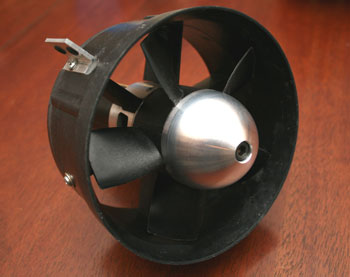
THE BEAUTY OF 12s POWER!
We have recently completed flight testing our new 12s powered E-Turbax Fan System and all we can say is, IT'S AWESOME! A great thing just got better. Powered by a Neu 1527/1.5Y and our Falcon 12s1p 6000 mah batteries (2 6s1p in series), this fan/motor combination has exceeded our expectations in all aspects. On the bench, the system is pushing 15+lb thrust at 115 amps and 5200 watts. With our 6500 mah batteries, we are pushing our ARF A-7 at speeds well over 165+ mph and attaining 6 minute flight times. Below are some pics of our "super-sonic" South East Asia A-7 Corsair II in action. Installation details can be found on our A-7 page.
SEE VIDEO OF OUR 12s POWERED EDF A-7 IN ACTION! (8 megs)*
*Please right click and save as.
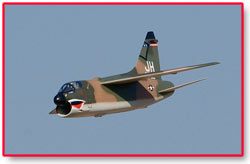
|
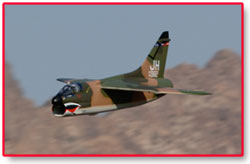 Photos by Joe Balabon Photos by Joe Balabon
|
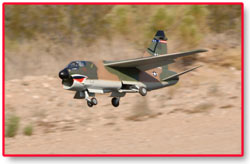
|
|---|
10S POWER, JUST WHAT THE DOCTOR ORDERED
In an effort to keep up with progressing technology, we've upgraded our 10s setup to better match the new 30c technology lipo batteries. Powered by a 1524/1.5Y motor and our Falcon 10s1p 6500 mah batteries (2 5s1p in series), this motor offers better performance than the original 1521 setup. The motor with it's longer can offers better heat dissapation allowing the system to run overall more efficiently at higher power levels. This fan/motor combination offers 155+ mph jet flight with 5+ minute flight times. On the bench, the system is pushing 13-14lb thrust at 110 amps and 4200 watts. Below are a few pictures and video of our 10s powered A-7 Corsair II. Installation details can be found on our A-7 page.
SEE VIDEO OF OUR 10s POWERED EDF A-7 IN ACTION! (6.5 megs)*
*Please right click and save as.

|
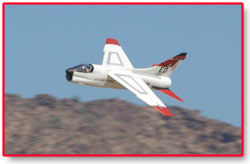 Photos by Joe Balabon Photos by Joe Balabon
|
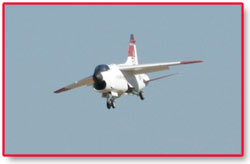
|
|---|
JETFAN90
Specifications | 12s Power | 8s Power | Pictures | Pricing
The multibladed JetFan90 EDFs have been wowing spectators and pilots with it's big performance that comes in such a small package. Now, combined with the new Neu 1415 motors and the latest battery technology, this fan is truly a 90mm powerhouse! The JetFan option is an affordable and light weight fan system yet provides sufficient power to turn heads at any flying site!
This fan system will easily fly most of our aircraft (some inlet and exhaust modifcation may be required depending on aircraft). With the recommended motors (Neu 1415/1.5Y with 8s or 1415/2Y with 12s battery), the appropriately matched battery (8s1p or 12s1p 5000 mah), and speed controller (Castle Creations EDGE 100 or 120HV) this setup provides RPMs over 35,000+ at 3000+ watts, 9+ lb thrust and jet flight over 150 mph! See fan pricing shown below
The WeMoTec Midifan has been flown in our F9F-8 Cougar, F9F-4/5 Panther (1/9 scale), and F-86Sabre/FJFury with impressive results pushing the aircraft over 160 mph. Inlet ducting is available for use in these aircraft.
|
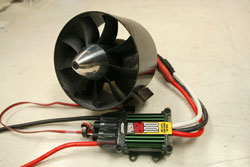
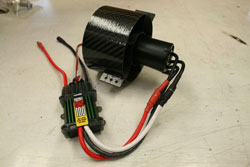
|
||||||||||||||||||||||||
THE 12s90 SYSTEM
This is a great performing setup that offers higher power (more rpm) and lower current draw than our 8s setup for longer flight times and cooler running batteries. Below are a few pictures and video of our 8s powered Cougar Installation details can be found on our Cougar page. 90mm inlet ducting is available seperately.
SEE VIDEO OF OUR 12s90 POWERED EDF COUGAR IN ACTION! (8 megs)*
*Please right click and save as.
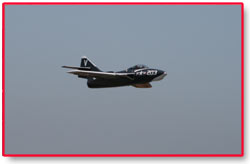
|
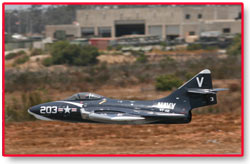
|
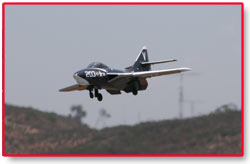
|
|---|
THE 8s90 SYSTEM
The 8s90 EDF system was flown first in our Cougar and depbuted at the 2008 AZ Jet Rally. It is a very light weight and powerful setup that offers great performance in a small and lightweight package. Below are a few pictures and video of our 8s powered Cougar Installation details can be found on our Cougar page. 90mm inlet ducting is available seperately.
SEE VIDEO OF OUR 8s POWERED EDF COUGAR IN ACTION! (6.5 megs)*
*Please right click and save as.
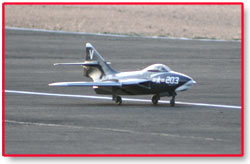
|
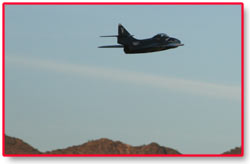
|
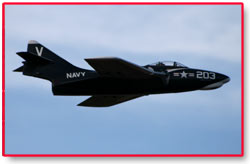
|
|---|
NEUENERGY CONVERTIBLE BATTERIES
These NEW 6200 mah 1p packs are some of the finest lithium polymer cells that we have tested and for the price, you can't beat the performance! Though conservatively rated at 35c, these batteries perform far better than comperable higher priced betteries as they are capable of high discharge rates while maintaining a high voltage under load. In short, these cells pack a punch and give you the duration you're looking for! Available in a “convertible” configuration as shown and nearly identical in length to our previous 6500 mah cells these batteries are thinner and significantly lighter! A "convertible" pack is capable of opening flat when needing to contour around a duct or low profile space or folding into the standard brick configuration depending on your installation requirements. Each pack utilizes multiple 6200 mah single cells wired in series to obtain the desired voltage to achieve a high capacity yet lightweight flight pack. Each of the individual cells in a pack are matched to exacting standards and built with the utmost proficiency for optimal performance. See our Accessories page to order!
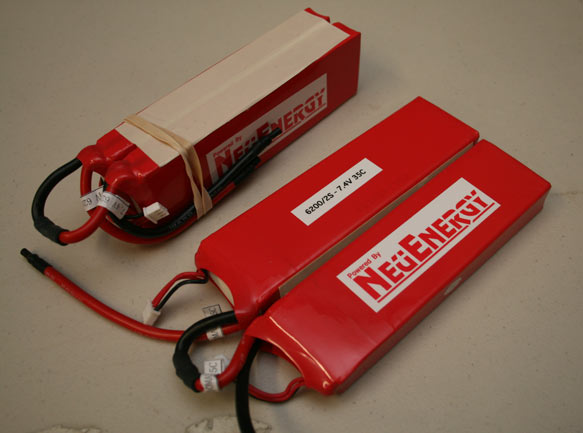
|
Battery Pack |
Capacity |
Voltage |
Brick Dimensions |
Weight |
Price
|
Order
|
|
3s1p 6200 (non-convertible) |
6,200 |
11.1v |
6x1.75x1.1 |
16 |
|
|
|
4s1p 6200 (convertible) |
6,200 |
14.8v |
6x1.75x1.5 |
21 |
|
|
|
5s1p 6200 (convertible) |
6,200 |
18.5v |
6x1.75x1.9 |
26 |
|
|
|
6s1p 6200 (convertible) |
6,200 |
22.2v |
6x1.75x2.2 |
31 |
|
Though GDF's and EDF's are intrinsically different in terms of how the fan is driven, the aerodynamics and rules of thumb of the ducted fan remain the same regardless of the power source. We've compiled a list of items and frequently asked questions that should be helpful to you in your DF jet flying. If there is something we missed , please let us know!
How a ducted fan works - Ducted fans operate as they sound: they are an internally ducted high performance fan which takes in air from the inlet opening and blows air out an exhaust tube to generate forward thrust. The air enters an impeller spinning at high RPM which propels pressurized air out of its exhaust at increased pressure and velocity. A ducted fan thrives on the air fed into it so too little air will starve the fan, thus preventing it from perform at its optimum design point. Conversely, inlets that are grossly oversized can have the same effect: a ducted fan can only process a given amount of air at any particular time, so too much air will hamper performance --not to mention the increased drag from the larger inlets.
Requirements for Ducted Fans - Ducted fans generally have inlets sized to approximately 90%-100% of the Fan Swept Area (FSA). Bigger is not always better as inlet sizes can be less, which can actually increase your top end speed (less ram drag), but at the expense of takeoff performance. Though, restricting the inlet too much can result in the fan starving for air no matter how fast the aircraft is travelling. Exhaust outlets are generally sized to approximately 75%-85% FSA. Choking down airflow at the exhaust, increases exhaust velocity. This in turn will increase top end speed of the aircraft. There is, however, a point of diminishing returns: choking down the exhaust too much will back pressure the fan resulting in degraded performance. Additionally, a larger outlet area will increase the static thrust of the system, but lower the top end speed of the aircraft. The areas suggested above represent a good compromise between static thrust and exhaust velocity.
Fan Swept Area - The fan swept area is calculated by subtracting the area of the impeller hub from the area of the inside of the shroud. The equation is shown below:
Duct Area - Impeller Hub Area = Fan Swept Area
External Inlet Shape - The ideal inlet lip shape for a ducted fan aircraft is a 2x1 ellipse. This represents the most aerodynamic shape while maintaining good airflow into the inlet system.
EDF Frequently Asked Questions (FAQ)
What is an EDF? - An EDF is a ducted fan that is powered by an electric motor and battery. Required to operate an EDF is an electric motor sized for the fan, an electronic speed controller (ESC) and a source battery. These items can vary depending on the combination and the desired performance.
What do Watts and Amps tell me? - Watts and amps tell you the power and current at which your EDF system is running. Amps is the measurement for electrical current while Watts is the measurement of power being generated. Amps is a measure of efficiency of the system and is related to the wind of the motor combined with the source battery and how the motor is loaded. Additionally, better quality motors will run more efficiently (same power with lower amps) than lower quality motors. Watts is the measure of power of the system. It is directly related to horsepower and in fact, 1 hp = 746 Watts. It is a good idea to keep an eye on these things as high amps and high power can also convert into heat. Watts will vary accordingly depending on the size of fan/motor combination.
What is the best EDF setup? - The best EDF setup is the one that you are happy with. Numerous combinations are possible, but we try to match our airplanes to systems that are best suited to them and spend many flight hours testing the setup before it is offered. Obviously, the most power for the lightest weight is the desired end.
How high a rating do I need on my ESC? - It is a good rule of thumb to have a good margin of safety to avoid thermal shutdown and over current problems. That being said, all ESCs are rated to a certain "burst" current, so as long as you are operating within the manufacturers specifications and not running continuously at this "burst" current rating, you should be ok.
GDF Frequently Asked Questions (FAQ)
What's the difference between a tractor and pusher ducted fan setup? - A tractor setup has the engine behind the fan and the tuned pipe straight back from the exhaust; a pusher has the engine in front of the fan and the tuned pipe interrupting the inlet air flow. Which is better? - The tractor setup is more efficient than the pusher; it also helps keep the engine cooler.
What kind of fuel should I use in my ducted fan system? - We recommend synthetic oil based 15% sport fuel (no ducted fan blends) to each gallon of which should be added one generous ounce of turbine engine oil. Turbine engine oil acts as a true lubricant, thereby reducing friction and increasing rpm. Ducted fan “blends” contain castor oil in addition to synthetic oil. Contrary to popular opinion, castor does not lubricate at higher temperatures, and is primarily used as a rust inhibitor. Synthetic oil can also burn at high exhaust temperatures; however, turbine engine oil does not burn until it reaches about twice the operating temperature of a ducted fan engine. Most “blends” contain too much oil, which dilutes the percentage of nitromethane—the component required for combustion.
Is the tuned pipe length important? - Tuned pipe length is crucial to performance! Having the correct tuned pipe volume is critical to your engine's ability to idle, transition, and produce maximum rpm on the top end. These 3 elements are the key to successful ducted fan flight! We cannot stress the importance of the pipe length enough; it is absolutely crucial directly affects your aircraft performance.
What is the apex of the pipe? - The apex is the point at which the pipe has its greatest volume and pressure. It is generally where pipe is seamed together so can be identified by a slightly darker gray band that appears on the exterior surface of the pipe. The apex is where the pressure fitting should be located.
Why are most glow ducted fan units 5” in diameter? - Engine rpm is inversely proportional to fan diameter; this means the smaller the fan diameter, the more rpm are required to turn it. Minimum rpm required for ducted fan flight is 20,000 rpm. The 5” fan unit is best suited to engines in the displacement range of .46-.91ci.